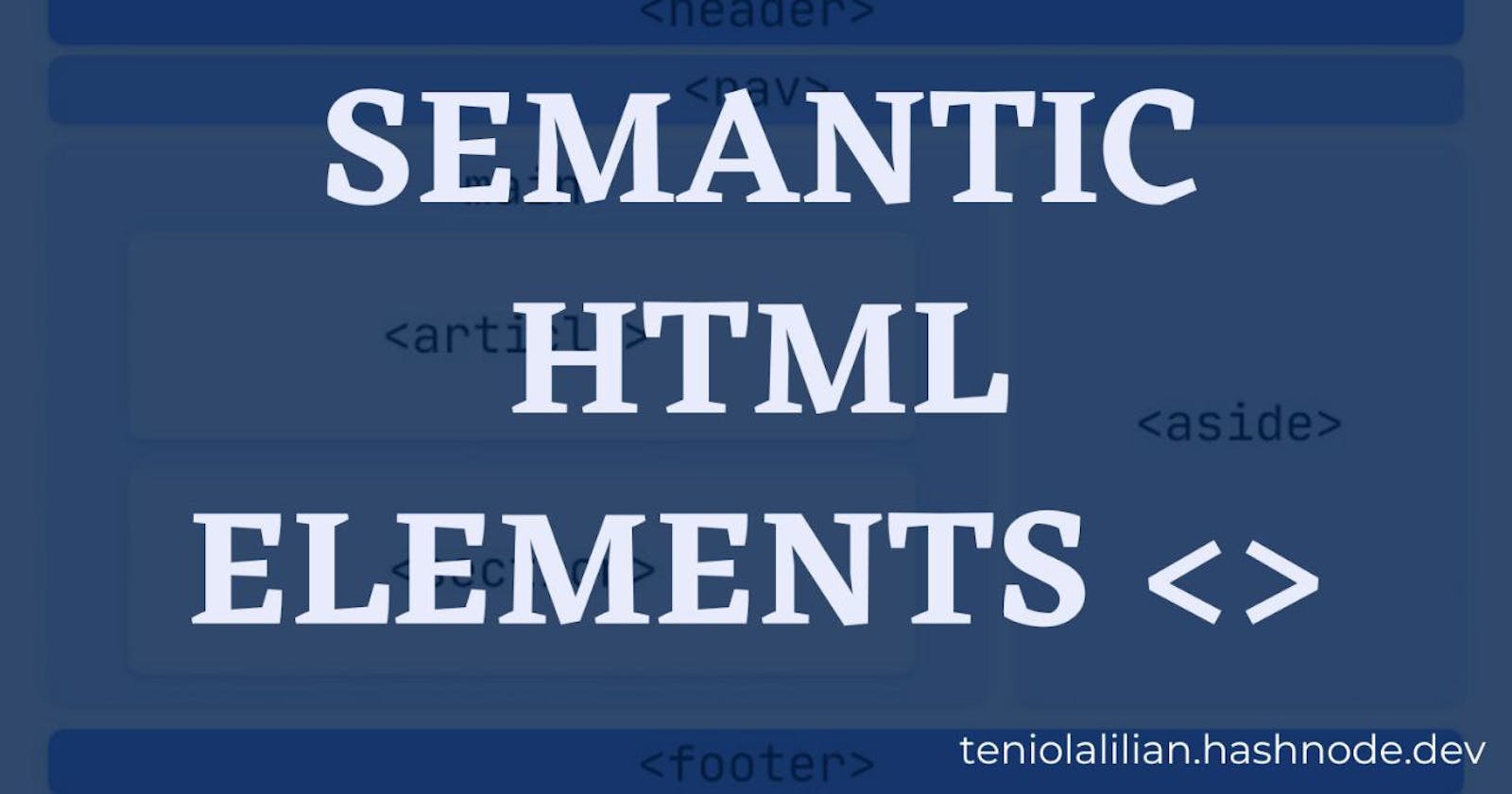Introduction
There is a saying about computers that goes like this - "garbage in, garbage out". This means that a faulty input will yield faulty output. This could also apply to how the browser reads our code and gives results to users, depending on how we choose to structure them. In this article, you will learn about semantic HTML elements, their importance, and how to use and implement them in your code.
What are Semantic HTML Elements?
Semantic HTML elements are elements that give meaning to a web page. They are commonly referred to as the building blocks of a webpage because they provide a way to describe its content, structure, and flow. Semantic HTML elements can be used to make your websites more readable and accessible by ensuring that users with visual disabilities can easily access your content without the use of other assistive technologies.
Examples of semantic HTML elements are:
The header tags <h1>
<article>
<nav>
Other types of semantic HTML elements are also important in building a functional and accessible website.
Importance of Semantic HTML Elements
The goal of any webpage is to communicate its content. In web development, semantic HTML elements give for easy communication of the content of a webpage. When you use a semantic HTML tag, it allows the browser to understand the purpose of the content contained in the element tag.
Semantic HTML elements are important because they allow your content to be indexed by search engines like Google or Bing. This means that when a user searches for something specific online (like "how to install [software name]" or "benefits of using [product name]," their search results will include all of the relevant information from your website so that they can easily find what they are looking for. Semantic HTML elements are the most important elements to use in your web pages. The reason for this is that they provide a more consistent and structured approach to how you can write your content.
How to use Semantic HTML Elements
When working with semantic HTML elements, it is essential to know the meaning of each element and how the browser interprets them.
Below is an example of how an HTML page should be structured while using the appropriate elements according to their meanings.
<header>
<h1>This is the header</h1>
</header>
<nav>
<!--The navigation goes here -->
</nav>
<main>
<!-- The main content of the page goes here -->
<article>
<!-- content of the article here -->
</article>
</main>
<footer>
<!-- footer of the page-->
</footer>
When semantic HTML is implemented in your code structure, the browser can effectively give accurate results to users in need of certain content contained in your webpage.
